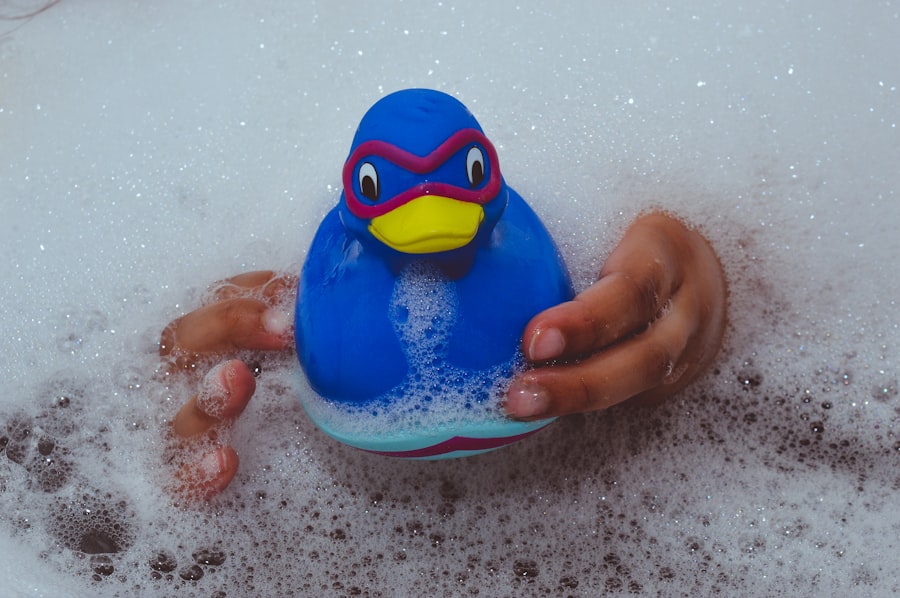As an athlete, I have always been on the lookout for effective recovery methods that can help me bounce back after intense training sessions. One technique that has gained significant popularity in recent years is ice bath recovery. The concept of immersing oneself in cold water may seem daunting at first, but the potential benefits it offers are hard to ignore.
Ice baths, or cold water immersion, have been used for decades by professional athletes and sports teams, and their effectiveness in promoting recovery has been backed by both anecdotal evidence and scientific research. The practice of ice bathing involves submerging the body in ice-cold water for a specific duration, typically ranging from 10 to 20 minutes. This method is believed to help reduce muscle soreness, speed up recovery time, and enhance overall performance.
As I delved deeper into the world of ice baths, I discovered that the benefits extend beyond just physical recovery; they also touch on mental resilience and well-being. In this article, I will explore the various ways ice baths can aid in recovery, their impact on inflammation and pain relief, and how they can contribute to improved athletic performance.
Contents
- 1 How Ice Baths Aid in Muscle Recovery
- 2 The Role of Ice Baths in Reducing Inflammation
- 3 Ice Baths for Pain Relief and Injury Prevention
- 4 The Mental Health Benefits of Ice Baths
- 5 Ice Baths and Improved Athletic Performance
- 6 Tips for a Successful Ice Bath Recovery
- 7 Potential Risks and Considerations for Ice Bath Recovery
- 8 FAQs
Key Takeaways
- Ice baths can aid in muscle recovery by reducing inflammation and pain, and improving athletic performance.
- Ice baths can help reduce inflammation by constricting blood vessels and decreasing metabolic activity.
- Ice baths can provide pain relief and help prevent injuries by numbing the affected area and reducing swelling.
- Ice baths can have mental health benefits by reducing stress and anxiety, and improving mood and overall well-being.
- When taking ice baths, it’s important to gradually decrease the water temperature and limit the duration to avoid potential risks such as hypothermia and skin damage.
How Ice Baths Aid in Muscle Recovery
One of the primary reasons I turned to ice baths was to aid in muscle recovery after grueling workouts. When I push my body to its limits, microscopic tears occur in my muscle fibers, leading to soreness and fatigue. Ice baths can help mitigate this damage by constricting blood vessels and reducing blood flow to the affected areas.
This process, known as vasoconstriction, helps limit swelling and inflammation, allowing my muscles to recover more efficiently. After emerging from an ice bath, my body begins to warm up again, leading to a process called vasodilation. This is when blood vessels expand, increasing blood flow to the muscles.
The influx of fresh blood delivers essential nutrients and oxygen while flushing out metabolic waste products that accumulate during exercise. This cycle of constriction and dilation not only speeds up recovery but also helps me feel rejuvenated and ready for my next training session.
The Role of Ice Baths in Reducing Inflammation

Inflammation is a natural response of the body to injury or stress, but excessive inflammation can hinder recovery and lead to prolonged discomfort. I have found that ice baths play a crucial role in managing inflammation after intense workouts. The cold temperature helps to numb the area and reduce swelling, which is particularly beneficial after high-impact activities or strength training sessions.
Research supports the idea that cold exposure can significantly lower levels of inflammatory markers in the body. By incorporating ice baths into my recovery routine, I have noticed a marked decrease in post-exercise inflammation. This not only allows me to recover faster but also helps prevent chronic issues that can arise from repeated bouts of inflammation.
The ability to manage inflammation effectively has become a cornerstone of my training regimen, enabling me to maintain consistency and avoid setbacks.
Ice Baths for Pain Relief and Injury Prevention
| Study | Findings |
|---|---|
| Journal of Athletic Training | Ice baths can help reduce muscle soreness and improve recovery after intense exercise. |
| British Journal of Sports Medicine | Ice baths may help in reducing inflammation and pain associated with muscle injuries. |
| Journal of Science and Medicine in Sport | Ice baths can potentially aid in preventing muscle damage and improving athletic performance. |
Pain is an inevitable part of any athletic journey, but I have discovered that ice baths can serve as an effective tool for pain relief. The cold temperature numbs nerve endings, providing immediate relief from soreness and discomfort. After a particularly challenging workout or competition, I often find solace in an ice bath as it helps dull the pain and allows me to relax both physically and mentally.
Moreover, regular use of ice baths can contribute to injury prevention. By reducing inflammation and promoting faster recovery, I am less likely to experience overuse injuries that can occur when my body is not given adequate time to heal. The cold exposure also helps strengthen my body’s resilience to stressors, making it more adaptable to the demands of training.
As I continue to prioritize recovery through ice baths, I feel more confident in my ability to push my limits while minimizing the risk of injury.
The Mental Health Benefits of Ice Baths
While the physical benefits of ice baths are well-documented, I have come to appreciate their impact on mental health as well. The initial shock of cold water can be a daunting experience, but it also serves as a powerful mental challenge. Each time I step into an ice bath, I am reminded of the importance of mental toughness and resilience.
Overcoming the discomfort of cold exposure has helped me develop a stronger mindset that translates into other areas of my life. Additionally, ice baths can promote relaxation and stress relief. The act of immersing myself in cold water forces me to focus on my breathing and be present in the moment.
This mindfulness practice has become a valuable tool for managing stress and anxiety, especially during high-pressure training periods or competitions. By incorporating ice baths into my routine, I have found a unique way to enhance my mental well-being while simultaneously supporting my physical recovery.
Ice Baths and Improved Athletic Performance

As an athlete striving for peak performance, I am always looking for ways to gain a competitive edge. Ice baths have become an integral part of my training regimen because they not only aid in recovery but also contribute to improved athletic performance. By allowing my body to recover more efficiently, I am able to train harder and more consistently without succumbing to fatigue or injury.
Research has shown that athletes who regularly incorporate ice baths into their recovery routines often experience enhanced performance metrics. This includes improved endurance, strength, and overall athletic output. The physiological benefits of reduced inflammation and faster recovery times translate into better training adaptations, allowing me to push my limits further than ever before.
As I continue to embrace ice baths as a vital component of my training strategy, I am excited about the potential for ongoing improvement in my performance.
Tips for a Successful Ice Bath Recovery
To maximize the benefits of ice bath recovery, I have learned a few essential tips that have made my experience more effective and enjoyable. First and foremost, it’s crucial to prepare mentally for the cold exposure. Setting a clear intention for the session helps me focus on the positive outcomes rather than the discomfort of the cold water.
I also pay attention to the temperature of the water; ideally, it should be between 50°F and 59°F (10°C to 15°C) for optimal results. Staying submerged for about 10 to 15 minutes is generally recommended, but I listen to my body and adjust accordingly. Afterward, warming up gradually is essential; I often follow up with a warm shower or some light stretching to ease back into normal body temperature.
Another tip is to incorporate breathing techniques during the ice bath. Focusing on deep breaths helps me manage the initial shock and discomfort while promoting relaxation. Finally, consistency is key; making ice baths a regular part of my recovery routine has allowed me to reap their full benefits over time.
Potential Risks and Considerations for Ice Bath Recovery
While ice baths offer numerous benefits, it’s important for me to be aware of potential risks and considerations associated with this recovery method. One significant concern is the risk of hypothermia if exposure is prolonged or if the water temperature is too low. It’s crucial for me to monitor how my body responds during each session and avoid staying in the water for too long.
Additionally, individuals with certain medical conditions such as cardiovascular issues or cold sensitivity should consult with a healthcare professional before incorporating ice baths into their routine. It’s essential for me to prioritize safety while exploring new recovery methods. In conclusion, ice bath recovery has become an invaluable tool in my athletic journey.
From aiding muscle recovery and reducing inflammation to enhancing mental resilience and improving performance, the benefits are undeniable. By approaching this practice with mindfulness and care, I can continue to harness its potential while minimizing risks. As I look ahead in my training endeavors, I am excited about the possibilities that lie ahead with ice bath recovery as a cornerstone of my regimen.
Ice bath recovery has gained popularity among athletes and fitness enthusiasts for its potential benefits in reducing muscle soreness and speeding up recovery time. An interesting aspect to consider is how cold immersion can also impact the immune system. For those interested in exploring this connection further, the article on Cold Plunge and Immunity provides valuable insights into how regular cold exposure might enhance immune function. This piece delves into the physiological responses triggered by cold immersion and how they could potentially contribute to a more robust immune system, making it a compelling read for anyone looking to optimize their recovery and overall health.
FAQs
What is an ice bath recovery?
An ice bath recovery is a form of cold water immersion therapy used by athletes and fitness enthusiasts to aid in muscle recovery and reduce inflammation after intense physical activity.
How does an ice bath recovery work?
The cold water in an ice bath constricts blood vessels and reduces blood flow to the muscles, which helps to decrease inflammation and swelling. It also numbs nerve endings, which can help to reduce pain and discomfort.
What are the benefits of ice bath recovery?
Ice bath recovery can help to reduce muscle soreness, speed up the recovery process, and improve overall muscle function. It may also help to prevent or reduce the risk of injury.
How long should you stay in an ice bath?
Most experts recommend staying in an ice bath for 10-15 minutes, although some athletes may choose to stay in for longer periods of time. It’s important to listen to your body and not stay in the ice bath for too long, as prolonged exposure to cold water can lead to hypothermia.
Are there any risks or side effects associated with ice bath recovery?
While ice bath recovery can be beneficial, there are some potential risks and side effects to be aware of. Prolonged exposure to cold water can lead to hypothermia, and some people may experience skin irritation or discomfort from the cold. It’s important to use caution and consult with a healthcare professional before incorporating ice bath recovery into your routine.
This website may contain affiliate links. As an affiliate, we may earn a commission from qualifying purchases at no additional cost to you.

